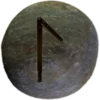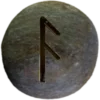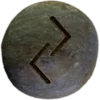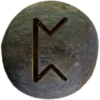Last Updated on December 24, 2024
Table of Contents


Aðalhendingar (pronounced AH-thahl-hen-din-gar) refers to perfect rhymes used in skaldic poetry, one of the most intricate poetic forms. The name originates from Old Norse and translates to “main rhymes.” Unlike skothendingar, which involve slant rhymes, aðalhendingar requires both consonants and vowels to match exactly, demanding mastery of language and rhythm.
This rhyming technique is a cornerstone of dróttkvætt (court meter), where it appear in even-numbered lines. This strict placement contrasts with skothendingar, which dominate the odd-numbered lines. Together, they form the metrical structure that defines skaldic verse. The balance of rhymes creates a musical quality, enhancing the poem’s impact.
An example from Hákonarmál, composed by Eyvindr Skáldaspillir, illustrates aðalhendingar:
“Við sverð deilir suðr stóðu,
röndu hrafn at hendi góðu.”
(With swords, they clashed; south they stood,
A shield’s raven, to hand so good.)
The exact matching of vowel and consonant sounds creates a harmonious flow, emphasizing the poem’s themes. In Egils saga, Egill Skallagrímsson’s poems often feature aðalhendingar, showcasing his skill in crafting vivid imagery. The Prose Edda by Snorri Sturluson includes detailed instructions for composing aðalhendingar. Skalds learned these rhyming techniques as part of their oral tradition, ensuring the continuation of this art form.
Mastering aðalhendingar required intense practice, as poets memorized intricate patterns and composed on demand. These rhymes conveyed not just stories but also the poet’s reputation, as flawless execution demonstrated their expertise. This tradition preserved historical and mythological narratives ![]() , linking the present to the past.
, linking the present to the past.
Elder Futhark Runes Associated with Aðalhendingar
The Ansuz rune (ᚨ, pronounced AHN-sooz) symbolizes communication and inspiration, mirroring the poetic brilliance required for aðalhendingar. ![]()
The Laguz rune (ᛚ, pronounced LAH-gooz) represents flow and intuition, essential qualities for crafting perfect rhymes in skaldic poetry.
Importance to Asatruar
Aðalhendingar showcases the linguistic and cultural excellence of Norse poets. For Asatruar, it connects them to their ancestors’ artistry. This poetic form represents the dedication to preserving stories, honoring tradition, and celebrating the beauty of language. Studying aðalhendingar deepens their understanding of Norse culture and inspires respect for the skill of ancient skalds. By engaging with this tradition, Asatruar keep their heritage alive in a meaningful and creative way.


